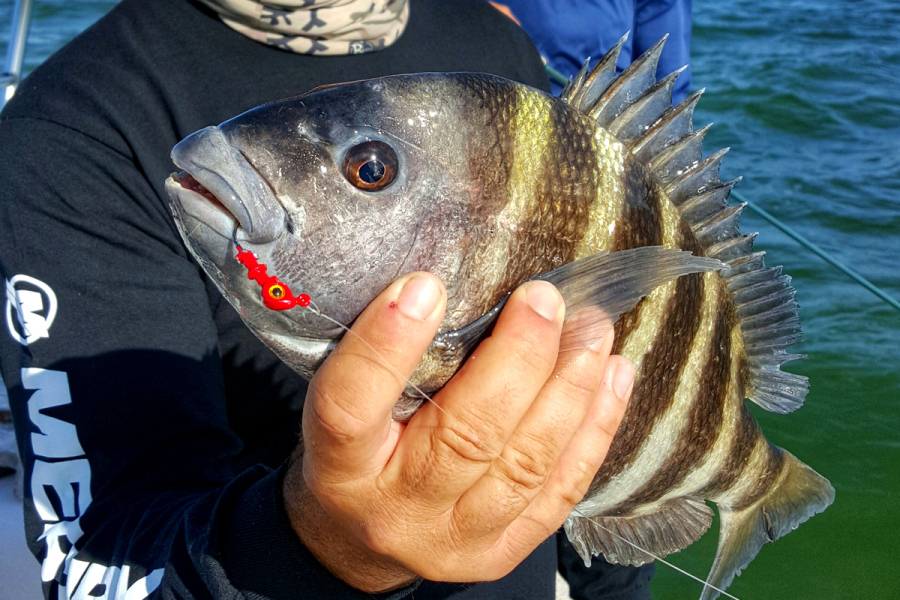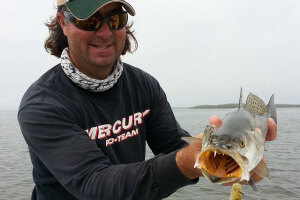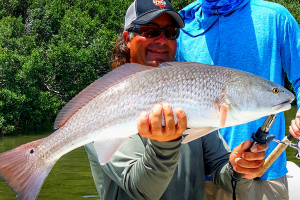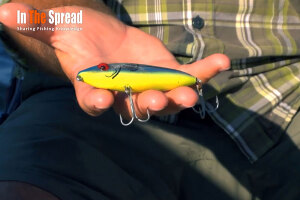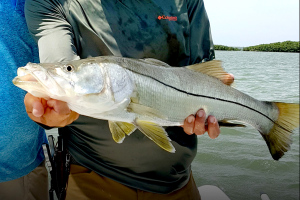The triple tail fish, a popular eating fish, often hangs around buoys and floating grass structures. In Florida, the minimum size is 18". Anglers often spot these fish during crab buoys, slowing down after passing them and drifting into casting range. To catch them, a simple technique involves tying a jighead under a cork and baiting it with tail-hooked shrimp. Once hooked, keep the fish off the structure by cranking the motor.
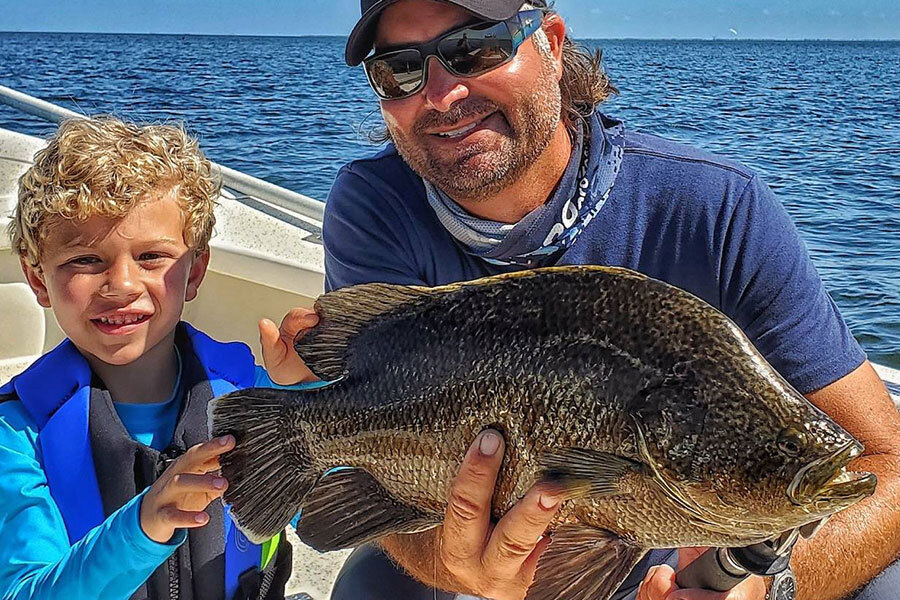
Triple Tail Fish - Simple Technique for Catching
The triple tail fish, known scientifically as Lobotes surinamensis, is a unique species found in tropical and subtropical waters around the world. Its most distinctive feature is the appearance of having three tails, which is actually due to the large and rounded dorsal and anal fins that closely resemble the tail fin. This appearance gives the triple tail its name.
Triple tail are usually brownish in color, often with mottled or irregular patterns, which helps them blend in with floating debris and seaweed. They can grow quite large, with some reaching over 3 feet in length and weighing up to 40 pounds. They are known for their strong fighting ability, making them a popular target for sport fishermen.
In terms of behavior, tripletail fish are often found floating near the surface, lying on their sides, mimicking floating objects or debris to ambush prey. They feed on a variety of foods, including small fish, crustaceans, and sometimes plant matter.
Their unique shape and behavior, along with their habitat near the surface near coastal areas, make them a fascinating species both for anglers and for those interested in marine biology.
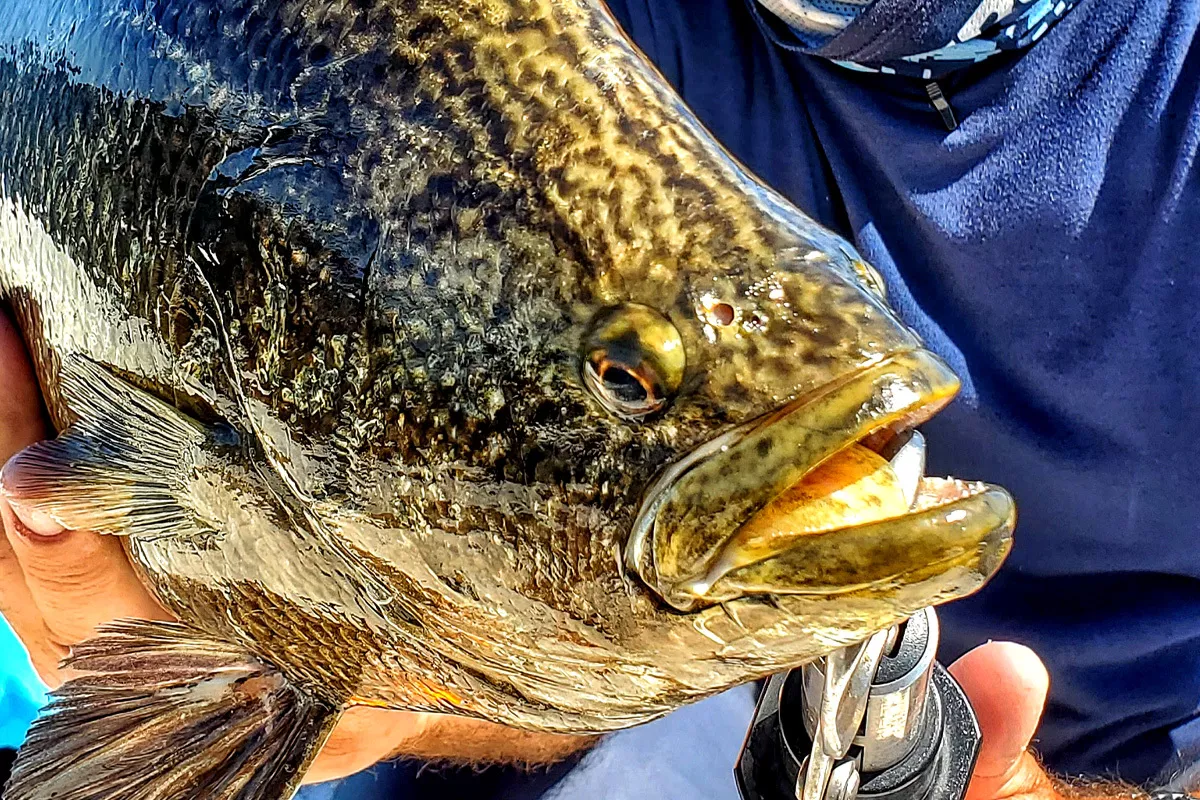
Triple Tail Fish in the Big Bend Region
The Big Bend region of Florida, with its sprawling and diverse marine ecosystem, has always been a haven for a wide array of marine life. In recent times, this region has witnessed a notable increase in the population of triple tail fish, a species that stands out for its unusual behavior and culinary appeal.
Tripletail fish or blackfish are distinctive for their behavior of mimicking floating debris. They are often found lounging near the surface, by the side of floating objects such as buoys, logs, and especially floating grass beds. This unique behavior is not just a fascinating aspect of their natural history, but also a strategic hunting tactic. By blending in with floating objects, they cleverly disguise themselves to ambush prey, which includes smaller fish and crustaceans.
For anglers, the presence of triple tail fish in the Big Bend region has added an exciting dimension to fishing. These fish are known for their strong fight when hooked, making them a challenging and rewarding catch. Additionally, triple tails are highly valued for their taste. Their flesh is firm, white, and flaky with a mild flavor that appeals to a wide range of palates, making them a popular choice for various culinary preparations.
Moreover, the increase in their numbers in the Big Bend area is not just of interest to fishing enthusiasts but also to marine biologists and conservationists. The reasons behind this surge could be numerous, ranging from changes in water temperature, currents, and food availability, to broader environmental changes. Understanding these patterns can provide valuable insights into the health and dynamics of the marine ecosystem in this part of Florida.
The growing presence of triple tail fish in the Big Bend region underscores the area's importance as a rich and diverse marine habitat. It also highlights the need for sustainable fishing practices and careful ecological monitoring to ensure that this unique species, along with the broader marine environment, continues to thrive.
William Toney Teaches You Inshore Fishing
Identifying and Locating Triple Tail Fish
Triple tail fish, with their unique morphology characterized by three prominent lobes in their dorsal fin, are masters of disguise in their natural habitat. This distinct appearance, resembling a triple tail, is where they derive their name. In the wild, particularly in areas like the Big Bend region of Florida, these fish exhibit remarkable camouflage skills, often making them a challenging target for anglers.
Their ability to blend into their surroundings is almost artful. Tripletail fish are known to position themselves under buoys, within floating debris, or near seaweed clusters. What makes them so elusive is their tendency to mimic the appearance of these objects, especially floating grass or aged, sun-bleached debris. To the untrained eye, a triple tail fish can easily pass unnoticed, appearing as just another piece of floating matter.
Experienced anglers in these waters have learned to recognize the subtle signs of their presence. One key strategy is to carefully inspect crab buoys, particularly those that are surrounded by grass or seem older and more weathered. These are the types of places where triple tail fish like to hide, waiting for prey or seeking shelter.
The sophisticated camouflage of the triple tail fish is not just a fascinating aspect of their behavior but also a testament to their adaptation and survival skills in the diverse and competitive marine ecosystems. Their elusive nature continues to challenge and intrigue anglers, adding an extra layer of excitement and skill to fishing in regions where these unique fish are found.
Fishing Techniques and Equipment
Catching elusive triple tail fish requires a blend of simplicity and precision. One of the most effective and popular methods among anglers involves the use of a jighead, strategically tied about 18 inches below a cork, and baited with a shrimp that is tail-hooked. This straightforward yet tactical approach is particularly effective for a few reasons.
Firstly, the use of a cork is twofold in its benefits. It serves as a float, ensuring that the bait maintains an appropriate depth near the surface where triple tail fish are often found. This positioning is crucial as triple tail fish tend to linger around buoys or floating debris just beneath the surface. Secondly, the cork acts as a highly sensitive indicator of fish activity. Triple tail fish are known for their gentle bites; hence, a subtle dip or even a slight pause in the cork's movement often signals that a fish has taken the bait. This indication is essential for timely and successful hook setting.
The choice of bait is also significant. Shrimp is a natural and favored food for many marine species, including triple tail. By tail-hooking the shrimp, it allows for a more natural movement in the water, making it an irresistible lure for these fish. Additionally, the placement of the jighead provides the necessary weight for casting near buoys while maintaining control over the bait's position.
This technique, which balances simplicity with strategic bait presentation, is highly favored among anglers targeting triple tail fish. It requires patience and observation, as the subtle indications of a bite demand attentiveness. Overall, this method epitomizes the essence of fishing for triple tail: a blend of skill, patience, and a deep understanding of the fish's behavior and habitat.
The Challenge of Landing a Triple Tail
Once a triple tail is successfully hooked, the encounter escalates into a thrilling and challenging battle. These fish are notorious for their remarkable strength and a strong instinct to return to their hiding spots, often around structures like buoys, floating debris, or seaweed beds. This natural tendency to dart back to safety poses a significant challenge for anglers, turning the act of reeling in the fish into a test of skill and patience.
Anglers must be acutely vigilant and ready to react quickly. One crucial aspect of successfully landing a triple tail involves maneuvering the boat effectively. As these fish often seek refuge around structures that can cause line entanglement, it's imperative to steer the boat away from these potential hazards. This maneuvering is a delicate dance, requiring a keen sense of timing and an understanding of the fish's behavior.
The excitement and thrill of the catch lie in this delicate balance. The angler must skillfully keep the fish away from its safe haven, using a combination of reel tension and rod positioning, while simultaneously reeling it in. This requires not only physical strength but also a strategic approach to tire out the fish without overexerting it or snapping the line.
Catching a triple tail, therefore, is more than just a matter of baiting and hooking. It's an exhilarating experience that combines anticipation, strategy, and a deep respect for the fish's strength and survival instincts. The satisfaction of landing a triple tail is as much about the skill and tactics employed as it is about the catch itself, making it a highly rewarding experience for any angler.
Conservation and Regulations
In Florida, where triple tail fishing is popular, conservation efforts play a crucial role in maintaining the health and sustainability of this species' population. The state (FWC) has implemented specific regulations, one of the most significant being the minimum size requirement for catching triple tail fish. This rule mandates that any triple tail caught must be at least 18 inches in length. Such a regulation is vital for several reasons.
Firstly, the size limit ensures that smaller and younger triple tail fish are returned to the water, giving them the opportunity to reach maturity. This is important because it allows these younger fish more time to contribute to the reproductive cycle, ensuring a steady replenishment of the population. By protecting the younger fish, the regulation helps maintain a balanced age structure within the triple tail population, which is crucial for its long-term sustainability.
Secondly, these conservation measures not only protect the triple tail fish but also contribute to the overall health of the marine ecosystem. Triple tail fish play a role in their aquatic environment, and maintaining their population helps preserve the ecological balance.
Anglers are encouraged to adhere strictly to these guidelines. This not only involves releasing undersized fish but also practicing responsible fishing techniques to minimize harm to the fish. By respecting these regulations, anglers contribute significantly to the conservation efforts, ensuring that triple tail populations remain robust and fishing can continue sustainably for future generations.
These conservation practices in Florida are a testament to the understanding that sustainable fishing is not just about what is caught today, but also about ensuring the health and availability of fish stocks for tomorrow. As such, they represent a harmonious balance between recreational fishing and environmental stewardship.
The Reward: A Delicious Meal
The allure of catching triple tail fish extends well beyond the excitement of the sport itself; these fish are highly esteemed for their culinary qualities. Triple tail fish are renowned for their firm, yet tender flesh, which possesses a mild, subtly sweet flavor, making them a favorite among seafood connoisseurs. This distinctive taste and texture profile allows them to be versatile in the kitchen, adaptable to a variety of cooking methods and recipes.
An 18-inch triple tail, which is the minimum legal size for capture in places like Florida, yields a generous amount of meat. The sizeable fillets from such a fish can provide a substantial meal for several people. This aspect makes the catch particularly gratifying for anglers, as it not only offers a thrilling fishing experience but also the promise of a delicious and hearty feast afterward.
The meat of the triple tail is well-suited to grilling, baking, broiling, or frying. Its firm texture ensures it holds up well to different cooking techniques, and its mild flavor makes it an excellent canvas for a range of seasonings and sauces. Whether it's simply grilled with a squeeze of lemon, pan-seared with a buttery sauce, or included in a sophisticated seafood recipe, the triple tail is sure to delight the palate.
For anglers and food enthusiasts alike, the triple tail thus represents a dual reward: the thrill of catching a challenging and elusive fish, followed by the pleasure of enjoying a meal that is both satisfying and flavorful. This combination of sport and culinary delight underscores the unique appeal of triple tail fishing, making it a sought-after experience in regions where these fish are found.
A Seasonal Pursuit
Tripletail fishing in Florida's Big Bend region is intrinsically tied to the rhythms of the seasons, making it a time-sensitive endeavor. Certain times of the year are more conducive to a successful catch, largely due to factors like weather patterns, water temperatures, and the availability of floating debris, which are critical in attracting triple tail fish.
Anglers in this region become adept at reading these environmental cues. For instance, warmer months often bring higher success rates in catching triple tail, as these fish prefer warmer waters and are more likely to be found lounging near the surface, camouflaged as floating debris. The presence of this debris itself, often more abundant after storms or seasonal shifts, creates ideal habitats for triple tail. They use these floating objects for cover, making areas with abundant debris particularly attractive for anglers.
Monitoring water temperatures is also crucial, as triple tail tend to move to different areas based on the warmth of the water. Weather patterns, therefore, play a significant role, as they can affect water temperature and the movement and behavior of these fish. Experienced anglers keep a close eye on these conditions, planning their trips accordingly to maximize their chances of a successful catch.
In conclusion, triple tail fishing in the Big Bend region is much more than a casual pastime. It's an activity that requires skill, patience, and a profound respect for the marine environment. Whether one is a seasoned angler with years of experience or a curious novice eager to learn, fishing for triple tail in this unique part of Florida offers an adventure that is both challenging and rewarding. It's a pursuit that not only tests one's fishing abilities but also deepens one's appreciation for the intricate balance of nature in the marine ecosystem.
To learn more about catching triple tail fish and building your own FAD's, check out my video Triple Tail Fish: Making Secret FADs

